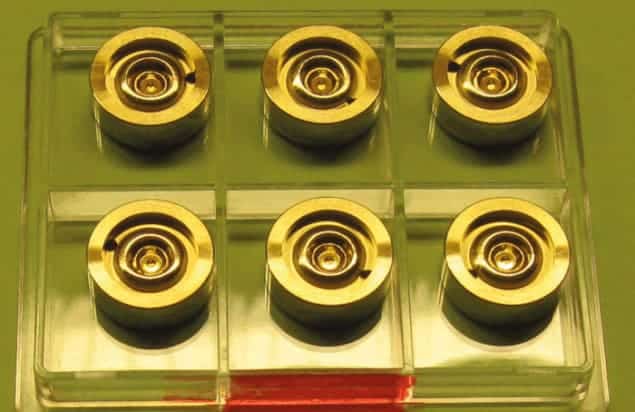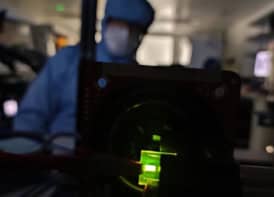
For as long as physicists have known about gamma rays, they have believed that it would be impossible to create a practical lens that could focus them like light. Now, however, a team of physicists in France and Germany has made an unexpected discovery that suggests gamma-ray focusing is indeed possible. As well as leading to a range of new applications in medical imaging and security screening, the discovery could result in a better fundamental understanding of how light interacts with matter.
When electromagnetic radiation travels through a medium, its speed is given by the index of refraction of the material. When radiation goes from one medium to another, the change in the index of refraction causes its path to bend – and this forms the basis of classical optics. For X-rays, the index of refraction is defined by Rayleigh scattering, which is essentially a classical phenomenon that can be explained without reference to the detailed interactions between individual photons and atomic nuclei.
While physicists have used Rayleigh scattering to focus X-rays, the strength of the effect drops off as the inverse square of the X-ray energy. This means that at high X-ray energies – and on into low gamma-ray energies – the radiation is not bent enough for a lens to work effectively. One way round this is to put the radiation through a large number of successive lenses. However, no lens is perfectly transparent and at higher energies the large number of lenses needed would result in practically all of the radiation being absorbed.
Making a comeback
According to classical physics and conventional quantum physics, this trend should continue at higher energies. This is what Dietrich Habs and colleagues at Ludwig Maximilians University in Munich, Germany, together with collaborators at the Institut Laue-Langevin in Grenoble, France, set out to measure in silicon. But instead they discovered that the exact opposite occurs – the index of refraction starts to make a comeback at energies greater than about 700 keV. What is more, while the index of refraction is negative for X-rays, it becomes positive for gamma rays.
Habs is an experimental physicist and does not claim to have a detailed theoretical explanation for the phenomenon, but he believes the results provide tantalizing hints of quantum electrodynamics beyond the Schwinger limit – the point at which traditional perturbative treatments of quantum electrodynamics break down and the mathematics becomes incalculable with current techniques. The researchers attribute the results to another process called Delbrück scattering, which occurs when an incident photon has enough energy to penetrate close enough to the nucleus to produce an electron–positron pair from the quantum vacuum.
Rewriting textbooks?
In the past, Habs explains, it was not possible to produce a sufficiently mono-energetic source of gamma rays to actually measure the refractive indices of materials at such extreme energies, so the data tables in nuclear-physics textbooks have been taken from theory, which assumed that Delbrück scattering is a weak effect. Now those textbooks may have to be rewritten. “What is new now is that with gamma rays we can really address the extremely high electric field of the nucleus,” explains Habs.
Nuclear physicist Norbert Pietralla of the University of Darmstadt in Germany is impressed by the results. “The measurements indicate that there exists an index of refraction for gamma-ray energies that is substantially larger than people believed before,” he says. He explains that this could lead to lenses for gamma rays.
Habs is also excited about the breadth of the possible applications the technology might offer. He suggests medical imaging as just one possibility, saying that gamma rays could be used to track lithium in the brains of patients being treated for bipolar disorders. On a broader note, he believes that the discovery could lead to a revolution in gamma-ray optics much like that initiated by the invention of the telescope and the microscope in the 17th century. Materials with nuclei that have a large positive charge – such as gold – should be ideal for making gamma-ray lenses, and the team are currently studying gold lenses.
The research is published in Physical Review Letters.



